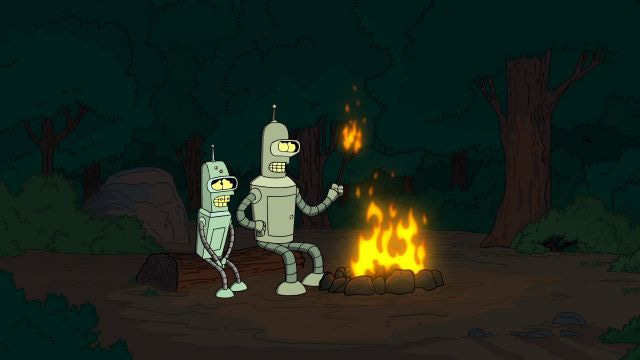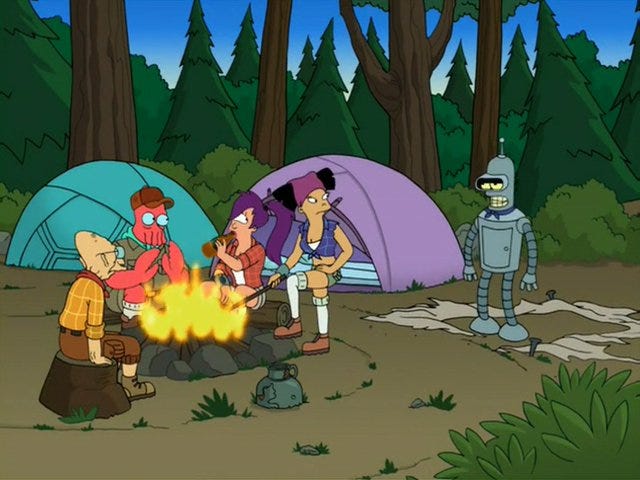So What, Who Cares (vol 3, issue 2) How big is the outdoor recreation industry anyway?
Hello!
My cup runneth over: I have had so many lovely tweets and emails from you, and it's been the bright spot of the week. Thank you all. I'm so glad to be writing this again! And with that, let's get to today's story.

The outdoor recreational industry is poised to flex its (lean, sun-gilded) muscles. The Outdoor Industry Association has been working since 2005 to gauge the breadth and depth of national spending on outdoor recreation and its 2011 report found that the American outdoor recreational industry generates $646 billion per year. If you assume that number is not wildly inflated to make the outdoor industry look awesome, than we're looking at an industry sector that is one of the biggest in the American economy.
I got curious and looked at the U.S. Bureau of Economic Analysis numbers for 2011 (the year of the often-cited OIA study) and 2015, and if we assume the $646 billion number isn't wildly padded, then the outdoor recreational industry has a bigger footprint in the American economy than fossil fuel extraction ($556 bil in '11/ $450 bil in '15) or agriculture/forestry/fishing/hunting ($435 bil in '11 / $447 bil in '15). I've uploaded the data set here.
But now we no longer have to take a trade association's word for the size of their market. On December 8, 2016, the Outdoor Recreation Jobs and Economic Impact Act of 2016 became law. Here's what the bill does:
(Sec. 2) This bill directs the Department of Commerce to enter into a joint memorandum with the Department of Agriculture and the Department of the Interior to conduct, acting through the Bureau of Economic Analysis, an assessment and analysis of the outdoor recreation economy of the United States and the effects attributable to it on the overall U.S. economy.
In conducting the assessment, Commerce: (1) may consider employment, sales, contributions to travel and tourism, and other appropriate contributing components of the outdoor recreation economy; and (2) must consult with specified federal agency heads and representatives of businesses, including small business concerns, that engage in commerce in the outdoor recreation economy.
Once the outdoor industry has solid numbers from an outside source -- estimated to be ready by 2020 -- those are figures anyone can use to form solid economic and public policy.
So what? Once there are numbers from the government, expect them to be used to shape national and state budgets.
There is a significant difference between how public lands and state lands operate. The former are federally

owned and managed. In terms of tax burdens, managing the 640 million acres of federally-owned public lands costs approximately $4 per taxpayer per year. State lands are held by state governments and managed as fungible assets; as any Californian can attest, state parks can and do close during budget shortfalls, and in other states, parks have been sold off to balance the budget.
As of right now, there is a movement afoot to sell off federally-managed lands to forestry and mining concerns. Being able to say, "Why are you turning over lands to an industry that produces X dollars per year when they're currently making 4X per year for this other industry?" is a pretty compelling argument.
Who cares? Politicians, both present and aspiring. Any one of the following affects the outdoor recreational industry: the rise of wildfires in the western U.S.; coastal erosion in the southeastern U.S. and Great Lakes regions; invasive species affecting agriculture and fisheries; climate change. And in turn, the outdoor recreational industry is going to want to reduce the factors that put a crimp in income. Individual companies are already responding to industry-level threats -- outdoor apparel manufacturers have already stopped making coldest-weather gear in response to shifting seasonal temperatures -- but companies represented in the aggregate will soon start leaning on policymakers to reduce environmental risks. They're bad for (big) business.

Rural counties will also care about the BEA numbers: they represent a way to quantify the impact any outdoor recreational offering has on the local economy. They'll help support arguments for more resources -- especially for fire fighting, erosion mitigation or pest management -- and give folks a way to cultivate or diversify revenue by capitalizing on the call of the wild.
Bonus reading: This Q&A with former Interior Dept. secretary Sally Jewell is exceedingly enlightening, especially this week. If I quoted all my favorite lines, this newsletter would be a third longer than it already is, so I'll stick with her assessment of what awaits the next Secretary of the Interior: "No matter what beliefs a person comes into this position with, the job has a way of showing you what’s really going on. "
*
Your pop culture recommendation of the day: I have to cover a lot of tech shows now, and my prep for these includes: setting up an Evernote notebook with pre-show research; packing wet wipes and hand sanitizer in my bag; re-reading either the Bridge trilogy by William Gibson or the Blue Ant trilogy by William Gibson. Those books help me frame the sheer weirdness of people talking about technology as if every cloud service or drone will reinvent reality.
One of the persistent leitmotifs in Gibson's work is how cultural artifacts are remixed and deployed in new ways via assorted technologies. In Pattern Recognition, much of the story centers around discovering the mysterious editor of haunting film collages; in both Idoru and All Tomorrow's Parties, a protagonist is able to marry human intuition to big data analysis of consumer culture, with the intent of disrupting social norms; in Zero History, a subplot revolves around discovering the maker of a jeans brand, as they've managed to completely disrupt the typical process of building customer loyalty and brand cachet.

The Gibsonian melding of chaotic human culture and automated technology is why my friend Mark Nystrom's art project, The Political Reporter, delights and fascinates me. Here's how Mark describes it:
An automated process gathers over 100,000 words for the project’s lexicon. Some of these words are randomly selected to appear onscreen, with each word broken into its individual letters. Blue letters are used in words from liberal sources and red letters from conservative ones. Periodically, words are chosen to make a statement. After the statement disappears, its words are randomly replaced with others from the lexicon.
The resulting statements can be read in real time on the website, or you can follow screencaps via Instagram. Some of the machine's results are funny -- "oops autocrats are full" -- while others are startlingly beautiful. And the reader is left to wonder about the context from which these statements arose and how they apply to a broader public conversation.
*
All right! Footer time! If you liked this newsletter, please pass it along to your pals. They can then subscribe here! You can leave me comments and pointers via Twitter (@lschmeiser). And thank you, always, for reading.

